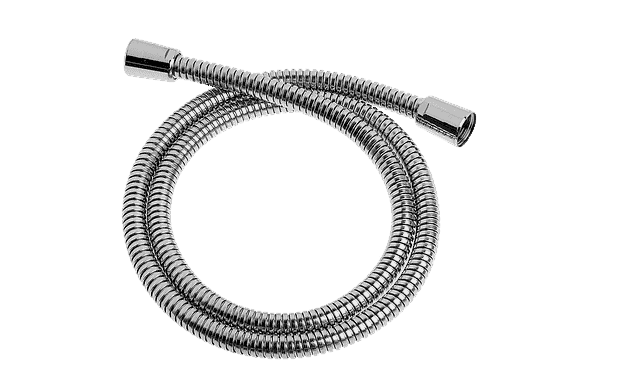A flood protect toilet hose is designed to prevent water from flooding your home in the event of a hose burst, break or rupture. It typically features a one-way valve or other mechanism that prevents the flow of water in the wrong direction, and may also have an indicator or alarm to alert the homeowner to the problem.
The flood protect toilet hose replaces the current hose you have that attaches the toilet water supply line to the toilet tank.
How does a flood protect toilet hose work?
A flood protect toilet hose attached from the water supply of your home to the underside base of the toilet. Water flows from the supply line into the tank every time the toilet is flushed and begins to refill.
The water is under tremendous pressure so it needs a strong line to withstand this pressure without bursting or breaking. In the past bendable stainless steel hoses were used but they have largely been replaced now by braided stainless steel hoses.
The flood protect toilet hoses also have this braided design and have an extra feature: a safety valve built inside the hose that detects an excessive water flow rate. Upon sensing this excessive flow, it shuts off water through the hose to prevent a flood.
The hose then needs to be reset which typically means shutting off the water supply and waiting for it to reset on its own. You may also have to unscrew one end of the hose to drain the water to reset it, also with the main water supply shut off of course.
Pros and cons of a leak protect toilet hose
| Leak protect toilet hose pros | Leak protect toilet hose cons |
| Can prevent a catastrophic and costly flood in your home. | The hose could still burst or otherwise break. |
| The hoses are normally maintenance free. | Surging water supply (i.e. air in the line) can trigger the safety feature and shut off the water so that you have to reset it. |
| Available for toilets, washing machines, ice makers and dishwashers. | Won’t work if the water leak is below the preset factory flow rate. |
| Works with both hot and cold water unless otherwise stated. | Won’t work if the leak is from the lower end of the hose which is attached to the main water supply. |
| The hoses are easy to install and generally install the same way as other toilet hoses. | Does not prevent blockages that could cause leaks or flooding. |
| Some products come with a water sensor alarm to indicate a leak. You can also buy a sensor on your own to use in conjunction for extra piece of mind. | Your chosen hose may not be compatible with your existing toilet. |
How to prevent leaks and floods from toilets
Here are a few ways to prevent leaks or floods from toilets:
- Use a flood protect toilet hose: That’s the focus of this article. This type of hose is designed to prevent water from overflowing from the toilet tank into the bowl and onto the floor in the event of a malfunction or other problem.
- Install water sensors: Water sensors can be placed on the floor near water-using devices in your home such as toilets, sinks, washing machine, dishwasher and water heater. They can alert you to a leak before it turns into a larger problem like a flood. Check with your home security company if they offer this service. Otherwise, you can purchase individual sensors online.
- Check for leaks regularly: Check for leaks by placing a few drops of food coloring in the toilet tank. If the color shows up in the bowl within 15 minutes, there is a leak.
- Replace old or damaged parts: Over time, the various parts of your toilet may wear out or become damaged. Replacing old or damaged parts, such as flappers, can help prevent leaks.
- Adjust the water level: The water level in the toilet tank should be adjusted to the manufacturer’s recommended level. If the water level is too high, it can cause leaks or floods.
- Insulate exposed pipes: Insulating exposed pipes in the bathroom can help prevent leaks caused by freezing temperatures.
- Regular Maintenance: Regularly inspecting, cleaning and maintaining your toilet can help prevent leaks and floods.
- Fix any leaks as soon as they occur: if you notice a leak, address it as soon as possible to prevent it from causing further damage.
By implementing these preventative measures, you can help reduce the risk of leaks or floods from your toilets and protect your home from potential damage.


